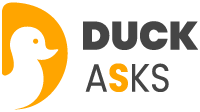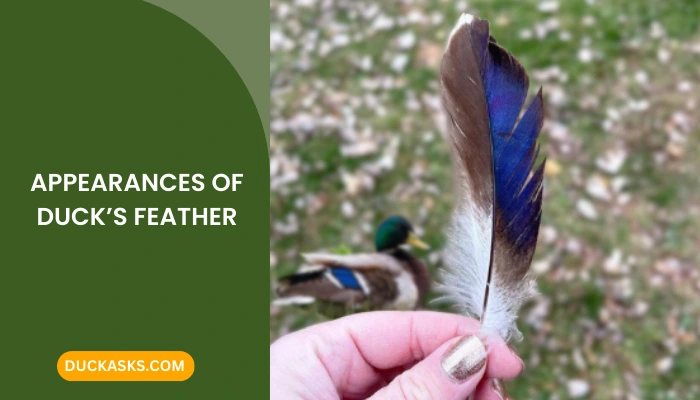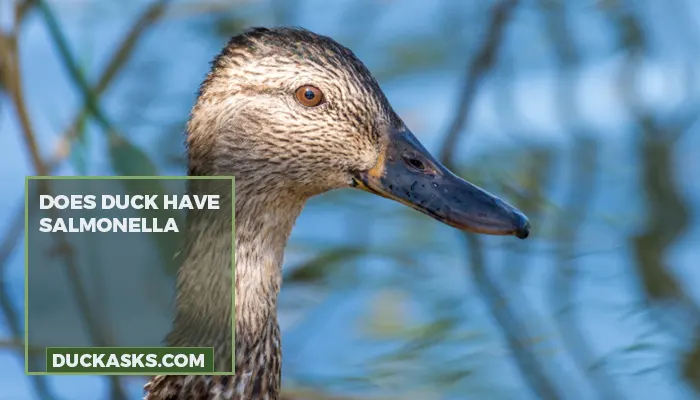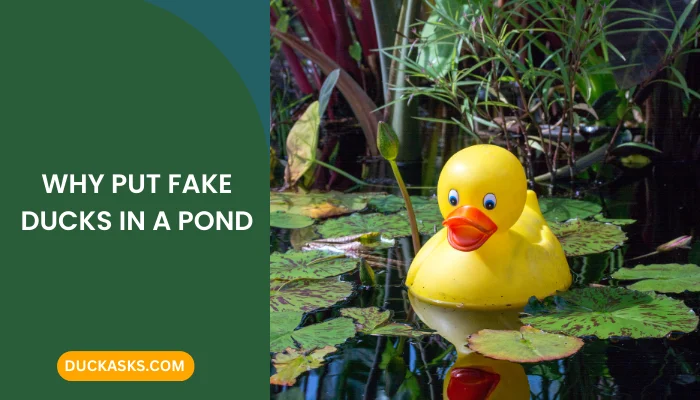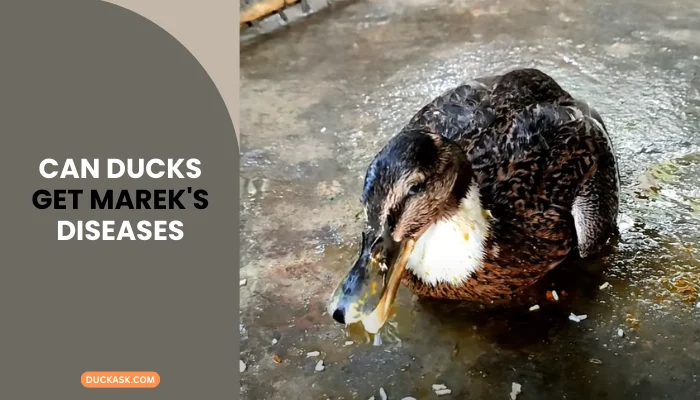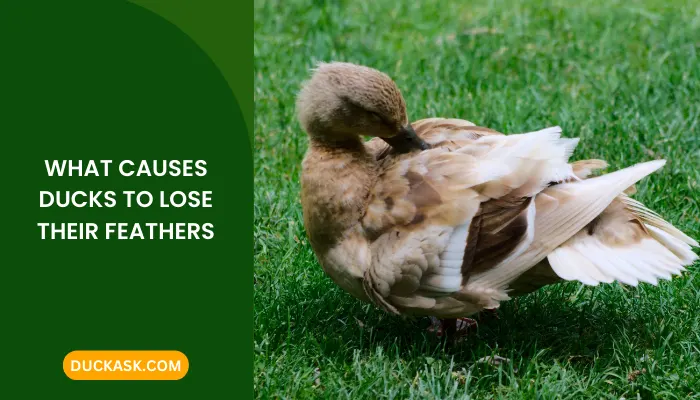What Are a Bunch of Ducks Called?
Ducks have a habit of traveling together in massive numbers, and on rare occasions, the number can be so big even the radar fails to handle it.
So, what are a bunch of ducks called? The answer depends on what they’re doing. If they’re swimming in a pond, call them ‘raft’ or ‘paddlings.’ if they are flying in the sky, call them a ‘flock.’
But wait, where did these names come from? That’s what we’re going to talk about today. So, continue to learn about many different collective nouns for a group of ducks and their origin.
Looking for more articles about ducks blog:
What Is the Term for a Group of Ducks?
To assign a collective noun to a group of ducks, you need to look at their action.
Because what they are doing collectively as a group will decide what you should call them.
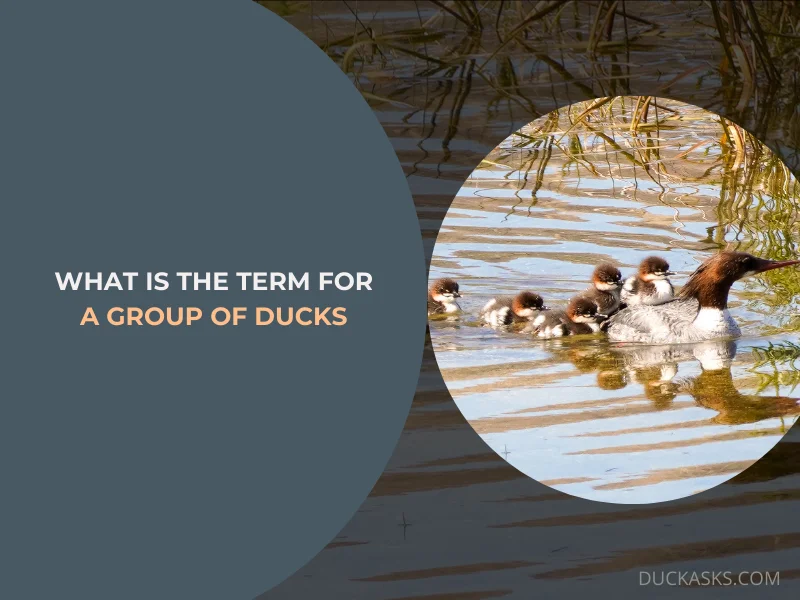
If you see that they’re walking, you can call them ‘waddling of ducks‘, if you see them swimming, you can call them ‘pontoon ducks,’ or ‘paddlings‘ or ‘raft‘.
So, ultimately, it’s their own action that determines what sort of name you should call them by.
Are There Different Names for Groups of Ducks Based on Their Age or Gender?
We know that male ones are called drakes and female ones are called ducks. But is there a collective noun for groups of ducks based on their gender or age?
No, there are no different names based on gender because their female and male members live together.
In any flock of ducks, you’ll find both female and male members, and for this reason, you can’t separate the groups based on gender.
Regarding age, there are no names based on age either. However, baby ducks are called ducklings.
What Is a Group of Flying Ducks Called?
When we have to call a group of ducks that are flying in the air, we use terms like ‘skein‘ or ‘flock.’
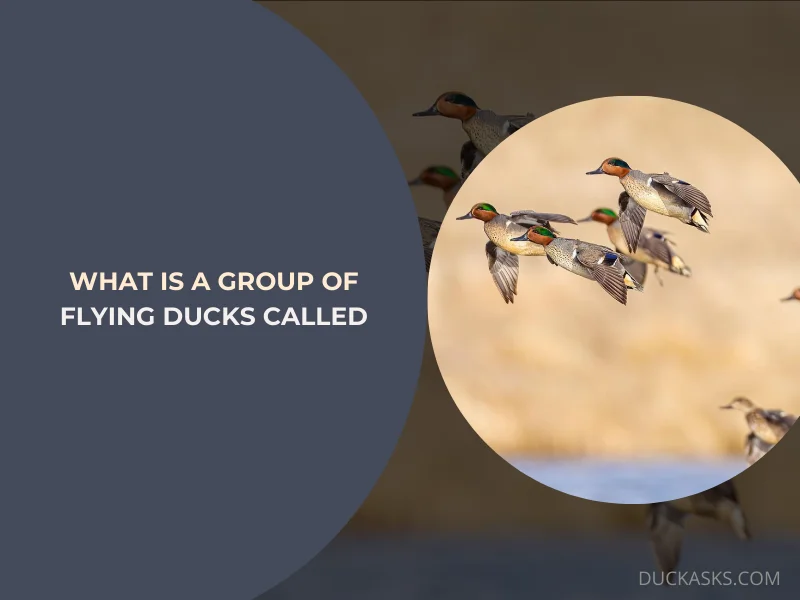
You can use this term for both flying goose and duck. But why call it ‘skein’? Another meaning of skein is a piece of yarn. Now when ducks fly together, they remain tight and very close to each other.
So, when they fly together positioning all the members very close in a narrow formation, they often resemble a piece of yarn flying through the air. And that’s why they’re called a skein.
Why Is a Group of Ducks Called a Raft?
When ducks gather together on the water, they tend to huddle together. And that often looks like a raft floating on water. This is the precise reason why we call ducks on the water a ‘raft of ducks.’

They can build the raft formation on the water at any given time of day or night.
Why do they huddle together on water? Two reasons can be given for that. During winter, by huddling together, they create warmth and make the environment comfortable for them.
And most importantly, when they are together, it gives them protection against predators. The swimming ducks are also called ‘paddlings.’
What Is a Group of Baby Ducks Called?
A group of baby ducks are called ducklings. But if these ducklings are called being taken care of by a mother, these ducklings are called ‘brood.’
It’s insane to think of how mothers of ducks take care of huge numbers of ducklings, often without much help from the father.
What Is a Pair of Ducks Called?
You can call a pair of waterfowl a brace. The pairing happens due to their breeding need. Since they need another partner from the opposite sex for breeding, drakes often seek out a duck for mating, or vice versa.

As you can guess, the pairing happens in the breeding season. A popular breed, Mallard ducks are very specific with this and will usually breed in October-November.
An interesting thing is ducks are not very choosy when choosing their partners. In fact, it’s common for them to mate with another species of waterfowl.
What Do You Call a Group of Mallard Ducks?
Just like other ducks, their name depends on their action. If you find a group of flying mallard ducks, you can call them a ‘flock of mallard ducks’ or a ‘team of mallard ducks.’
But if you find them walking on the ground, you can call them ‘sord of mallard ducks’. Sord is an English word originating from the Latin language and it also means flock.
Why Do Ducks Flock Together in Large Groups?
A thousand pair of eyes are better than a pair of eyes. When flying together, the ducks have a better chance of identifying danger than flying solo.
So, when they fly as a flock, they can keep an eye on each other and if necessary, protect each other from predators.
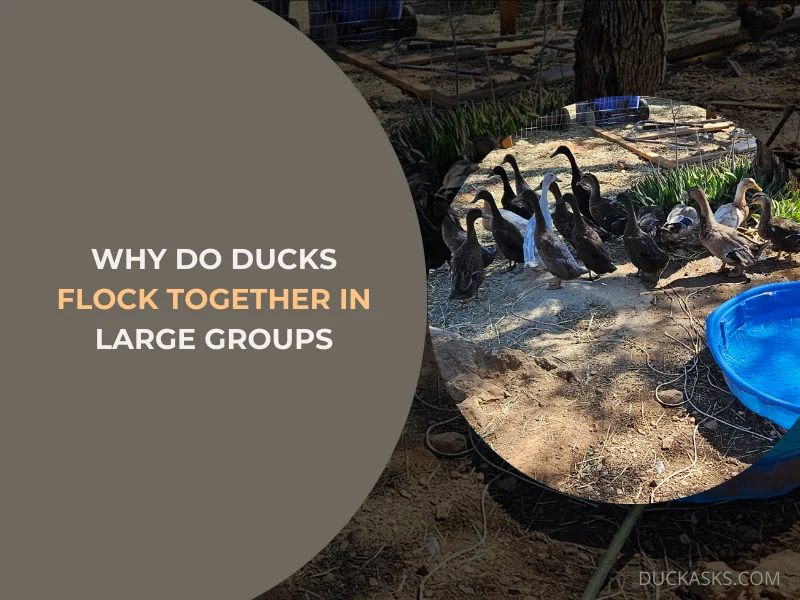
Also, it’s unlikely for a predator to attack thousands of ducks at once. But if the duck were to be alone or in a pair, the predator might take its chances. So, it’s in their best interest that when they travel, they do it together.
Also, flying in big numbers can reduce air resistance and enable them to fly at 60 miles per hour.
In the flock, you may also find other waterfowl species, such as geese. After all, the bigger the number, the more secure they will be.
Breeding Season Is the Exception
But you may not find this friendly nature during the breeding season. Due to the desire to protect their partner from other competitors, they tend to stay in pairs.
As a sense of intense jealousy works, you won’t find the ducks bonding with other ducks much at that time.
But there will still be groups, as the drakes are far higher in number than ducks, and naturally not all of them will be successful in finding partners. In that case, those who remained singles will flock together.
Drawbacks of Flying Together
There can be some drawbacks to flying together. The presence of a large number of ducks can attract hunters who will find it easy to target ducks from a big flock.
Also, if there’s not enough food for the migratory ducks, especially in winter, then some members have to go hungry.
Another big risk is diseases. If a duck catches a nasty disease, it can easily spread among the rest of the flock endangering all the ducks.
But despite the negatives, it’s still better for them to fly together.
What Is the Grand Passage?
The grand passage happened in November 1995 when a powerful storm hit the northern great plains. To protect themselves from the dangerous storm, the ducks migrated en masse to the south.
The numbers of ducks and geese migrating were so large that the radars were having a tough time distinguishing between ducks and planes. As a result, a lot of commercial planes had to be grounded for a short period.
How Many Ducks Are in a Flock?
It’s difficult to find an exact number. The flock can consist of 20 ducks, 200 ducks, 20000 ducks, and even a million ducks.
Domestic ducks move in small numbers, like 5-15, but wild ducks often move in thousands.
Conclusion
The name of a group of ducks usually indicates the action of the ducks. And there’s a different name for each action, whether they’re just walking, swimming, or flying.
I guess, from now on, you won’t have any problem naming the group of ducks, no matter what they’re doing.
Reference:
- https://a-z-animals.com/blog/what-is-a-group-of-ducks-called/
- https://www.discoverwildlife.com/animal-facts/birds/ducks-of-the-uk/
- https://www.audubon.org/news/mallards-are-everywhere-and-thats-great-wetlands/
- https://www.peta.org/issues/animals-used-for-food/factory-farming/ducks-geese/hidden-lives-ducks-geese/
Image Credit:
- Facebook.com/KSL NewsRadio
- Facebook.com/ Garrett Derr Photography LLC
- Facebook.com/ National Wildlife Federation
- Facebook.com/ Jennifer Jannuzzi
- Facebook.com/ Silvia Castillo
